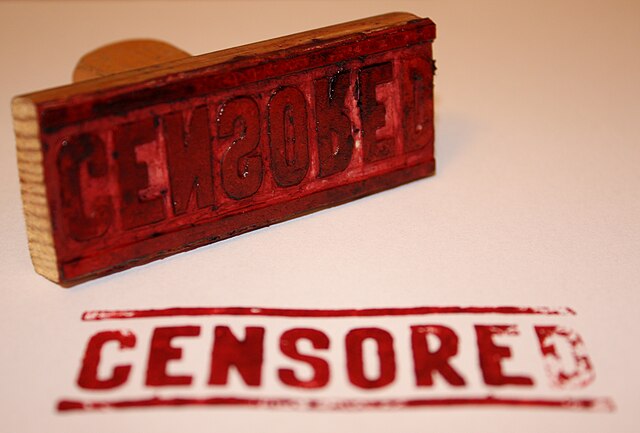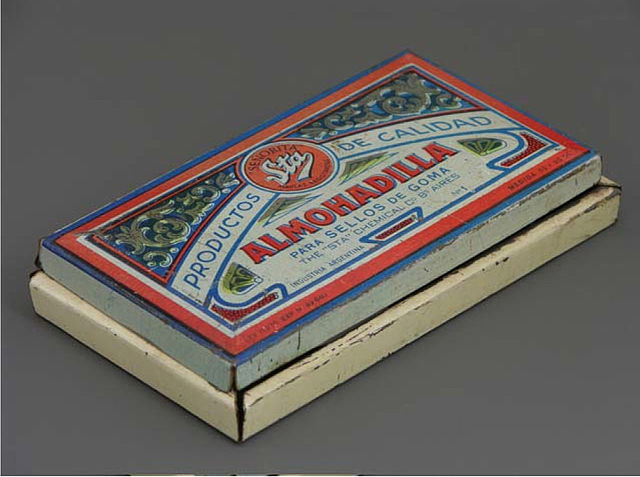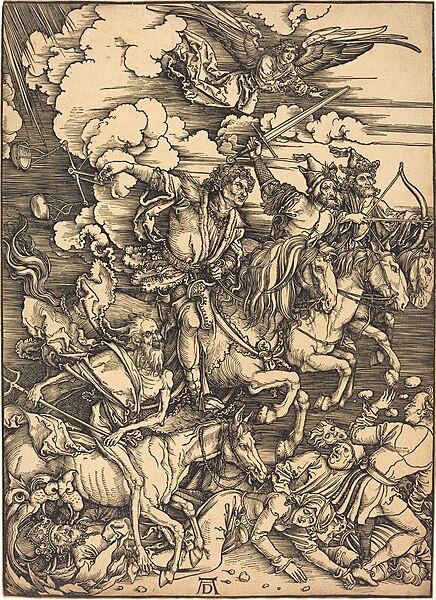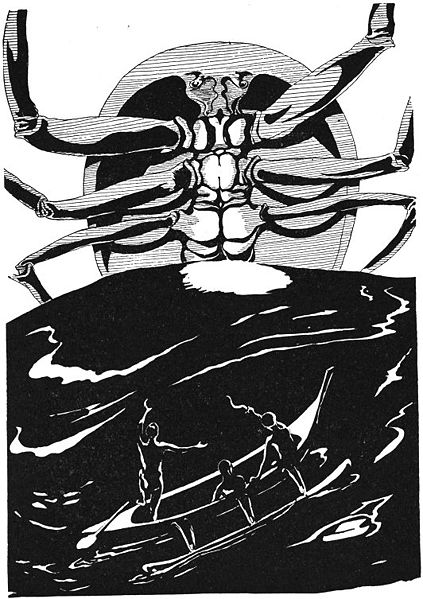A rubber stamp is an image or pattern that has been carved, molded, laser engraved, or vulcanized onto a sheet of rubber. Rubber stamping, also called stamping, is a craft in which some type of ink made of dye or pigment is applied to a rubber stamp, and used to make decorative images on some media, such as paper or fabric.
A rubber stamp, and the message stamped by it
Ink pad from second half of the 20th century, in the Museo del Objeto del Objeto collection
With modern laser-engraving technology, personalized rubber stamps can be made in minutes.
Bureaucratic rubber stamps displayed in the Museum of Occupations and Freedom Fights, in Vilnius, Lithuania
Woodcut is a relief printing technique in printmaking. An artist carves an image into the surface of a block of wood—typically with gouges—leaving the printing parts level with the surface while removing the non-printing parts. Areas that the artist cuts away carry no ink, while characters or images at surface level carry the ink to produce the print. The block is cut along the wood grain. The surface is covered with ink by rolling over the surface with an ink-covered roller (brayer), leaving ink upon the flat surface but not in the non-printing areas.
The Four Horsemen c. 1496–98 by Albrecht Dürer, depicting the Four Horsemen of the Apocalypse
Block Cutter at Work woodcut by Jost Amman, 1568
The Crab that played with the sea, Woodcut by Rudyard Kipling illustrating one of his Just So Stories (1902). In mixed white-line (below) and normal woodcut (above).
Madonna del Fuoco (Madonna of the Fire, c. 1425), Cathedral of Forlì, in Italy








